Foods Of the Arab World – A History (Part 1)
By: Habeeb Salloum/Arab America Contributing Writer
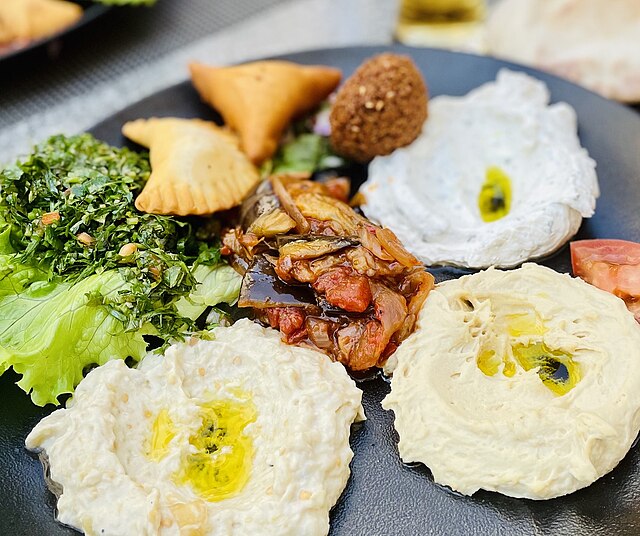
The history of Arab food goes back to the ancient civilizations of the Middle East. The Sumerians, Babylonians, Phoenicians or Canaanites, Hittites, Arameans, Assyrians, Egyptians and Nabateans all contributed to the formation of the Arab kitchen.
These ancient peoples subsisted on the products they cultivated such as wheat, vegetables and spices. They enjoyed meats such as lamb, mutton and poultry. They baked breads and stuffed pies.
So important was food that the ancients inscribed scenes of culinary methods and feasts on their monuments. Recipes were recorded. In fact, the first written recipe known to us was found in Iraq in a Babylonian temple dating back to 1750 B.C.
Later, the many conquerors who dominated and stayed for awhile like the Greeks, Romans and later on the Mongols, Tartars, Turks and the British and French colonialists all left their mark on the foods of the Arabs and the other peoples of western Asia.
However, it was trade with the other countries in Asia, especially due to the Silk Road, that had the greatest impact on the evolvement of Arab food.
While sitting at home watching satellite television last year, I witnessed Aleppo, Syria celebrating the Silk Road Festival as part of that city’s economic and gastronomic history. The scene included caravans arriving after a long journey from China.
“It must have begun its journey in Xi’an”, I thought to myself. I had read much about that historic Chinese city and had always yearned to walk its historic streets.
A few months later, I began my stroll through the streets of Xi’an, exploring its glorious site of the Emperor Chin’s Terra Cotta army, experiencing the atmosphere of its Muslim quarter and glorying in its excellent well-known cuisine. At the height of its splendour, Xi’an vied with Rome and later with Constantinople and Cordova as the greatest city on the globe.
Much of the richness of Xi’an’s food is due to the Silk Road which began in this city and usually ended in Aleppo or Damascus in Syria. Also, due to this trade route, the food of the Greater Syria area, especially Aleppo, even today, has the most sophisticated cuisine in the Middle East.
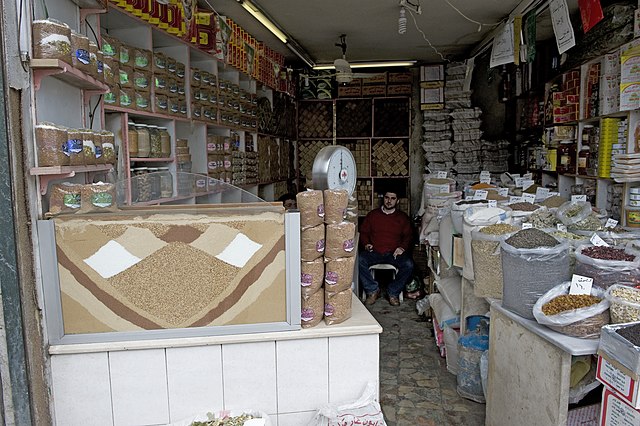
Xi’an, situated strategically at the beginning of the routes crossing from China through Central Asia to the Middle East and beyond, began as a route for the trade in silk during the Greek and Roman eras. Later herbs, spices, ceramics and other goods were added.
The trade routes also found other pathways. One dipped into India, and then crossed Persia to the Greater Syria area; while another crossed the sea from India to Basra in Iraq then up the Euphrates River to Aleppo and the other cities of Western Asia.
However, it was the Arab dhows that had the greatest impact on the trade from the Far East to western Asia then partly to Europe.
The Arabs early on discovered that the monsoon winds blew towards India in the summer and Africa in the winter. Thereafter, these Indian Ocean winds were to play a vital role in sailing to the shores of East Africa and past the Indian sub-continent to the Indonesian islands and China.
The dhow traders were one of the links between the Far East and the Arab East through which the silks and spices of the East found their way to Europe. Even long before the birth of Christ Arab navigators and geographers began to map the known world of their times using astronomical mappings of the stars for sea trade and guides for the land routes.
Using information gained from sailors, scholars, caravans, travellers and ancient sea traders – by the way, the Arabs had been trading with China for more than 2,000 years – many books were written in Arabic about food, geography, navigation and travel.
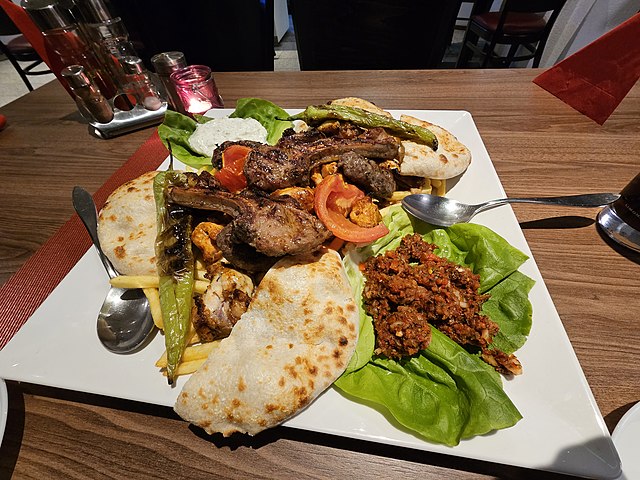
The legendary tales of Sindbad the Sailor were highly exaggerated stories of travel during that age.
The Silk Road and the interplay between cultural commodities gave rise to new words in the vocabulary of western languages. The introduction of new spices, for example, also moved languages along the trade routes. The Arabic spice zacfaraan eventually reached English as ‘saffron’ and ‘kammoon’ gave us the English word ‘cumin’.
Not only was food trade a commodity but the movement of ideas in architecture, technology, dress, etiquette, medicine, pharmacology, agriculture and other necessities of life were all part of this great Silk Road activity.
In the Indian sub-continent, the silk road was also responsible for the spread of new ideas and structures such as the Taj Mahal – the symbol of India throughout the world. Built as a monument to love, the Taj Mahal is the most famous of all India’s tourist attractions and one of the wonders of the world.
The money flowing into India because of the demand for so many of the sub-continent’s goods, allowed for luxury at its best.
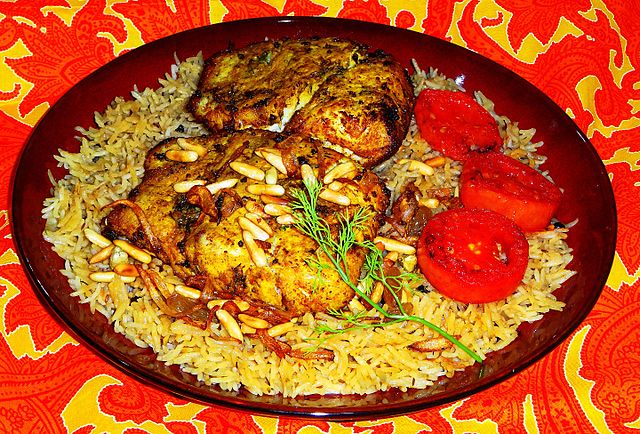
The immensity of foodstuffs and the cultures of the Indian sub-continent have always affected the kitchens of mankind, including the cuisine of the Arab world. At the top of India’s contributions are the spices that make cooking such a pleasant experience for many cooks.
The romantic and exotic history of spices goes back into the mists of history. Since time immemorial, myths and legends have enveloped these seasonings – once, especially for Europeans, shrouded in mystery.
This led Europeans, through the ages, to attribute to them innumerable sexual and medical qualities, magical properties and fantastic claims as to their affect on foods. Hence, they have been a much sought after food condiment since at least Biblical times.
With the exception of allspice, capsicums and vanilla hailing from the New World, most all other seasonings originated in China, India, the Malaysian Islands and the Near East; and were brought by sea and camel caravan to the Mediterranean region by the Arabs.
For hundreds of years, the profits made from this commerce formed the basis of Middle Eastern empires and brought much wealth to the Arabian Peninsula.
In the Europe of the Medieval Ages, spices were as precious as gold. They were utilized in all types of medicines and perfumes. In later centuries, during the Age of Discovery, they were the inspiration that drew daring European adventurers to conquer the Americas and the eastern Asiatic lands. None of the other products of trade in world history had such a profound effect on humankind.
India was and continues to be the centre of much movement of spices. Today, the food in the Arabian/Persian Gulf countries and the other lands closest to the Indian sub-continent have some of the spiciest cuisines in the world.
In close proximity and having had a great affect on Middle Eastern cuisine is the Iranian kitchen.
When we cook with apricots, artichokes, eggplants, lemons, limes, oranges, pistachios, spinach, saffron and tarragon, Iran should immediately come to mind. These cooking ingredients and many others came to us from that country, historically known as Persia. Its location at the very centre of the Silk Road, gave it a strategic position between East and West and between the ancient and medieval worlds. This made it an ideal transition point for products being traded between the Orient and the West.
Many of these products were introduced into Persia from China and India then carried to the Iberian Peninsula by the Arabs after the rise of Islam. In the ensuing centuries, from Iberia, this once Arab stronghold in Europe, these foodstuffs were defused to the remainder of the continent. The names of these food products and ingredients, in most European languages, in many cases, still carry their Arabized-Persian names.
The Iranian use of seasoning in their food has a history that goes back to the beginning of civilization. Continuing the tradition of the use of condiments in the kitchen from the Sumerians and Babylonians in Mesopotamia, the cuisine of Persia developed into the affluent culture of the kings.
In the ensuing centuries, the culinary art of Persia was refined by the use of these and a good number of other local herbs and spices, as well as the introduction of plants and products from the neighbouring lands.
Persia’s proximity to the Arabian Peninsula made it the greatest influence on the cuisine of the Arabs.
Persian cuisine was at its height when the Arabs broke into the scene in the 7th century with their message of Islam. Before the dawn of Islam, the food of the desert Arabs from the Arabian Peninsula was mostly meat, fish, dates and milk products. As they came into contact with the peoples of Persia, they began to borrow much from their kitchen. So, for example, rice mixed with fruit, chicken cooked with pomegranates, meat mixed with herbs and spices and then grilled with vegetables all attest to their Persian origin.
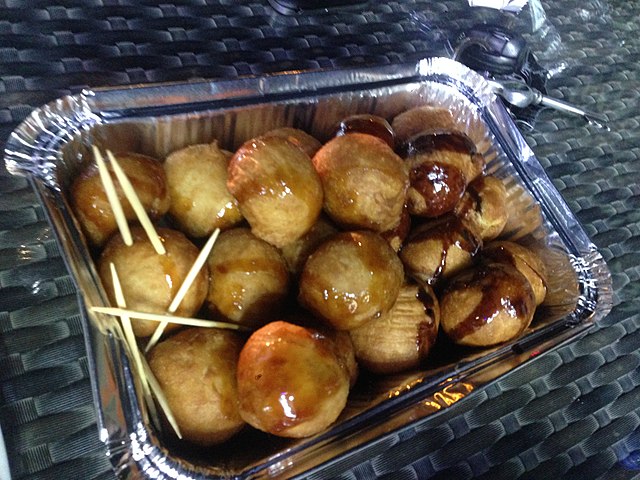
This reached it height from the 8th to the 13th centuries when Baghdad became the capital of the rich Islamic world. The opulence of the city produced very sophisticated culinary tastes, hence creating a very rich cuisine – parts of which have lasted until our times.
In the formation of this cuisine, again it was the Persian that had the greatest influence. A good number of the foods kept their Persian names such as the dish shown here. Al-Sikbaj, one of the most popular of the ‘luxurious foods’, was meat or fish marinated in vinegar and stewed slowly with vegetables.
The dish spread throughout the Arab/Islamic Empire reaching the Iberian Peninsula. The al-Sikbaj of the Arabs became the escabeche of Spain and ceviche of the Americas.
The Arabs took on the Persian dishes and enhanced and developed them to produce an incredibly rich Arab cuisine – later becoming the prototype of the dishes throughout the Arab part of the Muslim world.
Poems were composed at feasts in praise of the dishes and the culinary arts became the popular pastime of the wealthy. In fact, the love of food led to a new genre of literature called ta’miyya where the subject of love became the dishes at the eating table.
This also led to the writing of cookbooks – the first cookbooks in the world as we know them today. Cooking became so popular among the elite in society that a cookbook was even written by one of the Abbasid caliphs, Ibrahim ibn al-Mahdi. Many have been lost but over the past century, a number are now coming to light.
During their Golden Age, the Arabs of Baghdad, after developing an opulent kitchen, carried much of it to the Iberian Peninsula. Through the ensuing centuries, in their Thousand and One Nights cities of Cordoba, Fez, Cairo, Damascus and Baghdad, the Arabs developed a tasty and elegant cuisine.
In the palaces of the caliphs, emirs and sultans, the legendary feasts and banquets, in their variety and richness, were unmatched by any other ruling class of that age.
The Arabs in these centuries, not only in the Empire’s capital Baghdad, but also in other countries of their domain, compiled excellent usable cookbooks, one of which contains 500 recipes for chicken alone. From among these, still remaining with us, is that of the 10th century al-Warraq who wrote Kitab al-Tabikh or The Book of Cooking – a food work which refers to numerous other cookbooks, now lost, compiled long before his time.
All include numerous recipes for soups, cold and hot appetizers, meat, poultry and fish entrees, puddings, cookies, candies, fritters and cakes and, of course, beverages. Unique mixtures of fruit and nuts with a combination of syrups and spices came to produce an haute cuisine, a new contribution to food culture. A good example is a 13th century-style chicken stuffed with pistachios, herbs and spices and coated with a pistachio-sugar syrup mixture.
These detailed culinary manuals describe the do’s and don’ts of maintaining cleanliness of the kitchen and its utensils, as well as hygienic rules for the cook and guests. There are also chapters about dishes that should be eaten during Lent.
Throughout these manuals, the reader is provided with details about the dietary benefits of certain ingredients and which dishes should be served for specific illnesses.
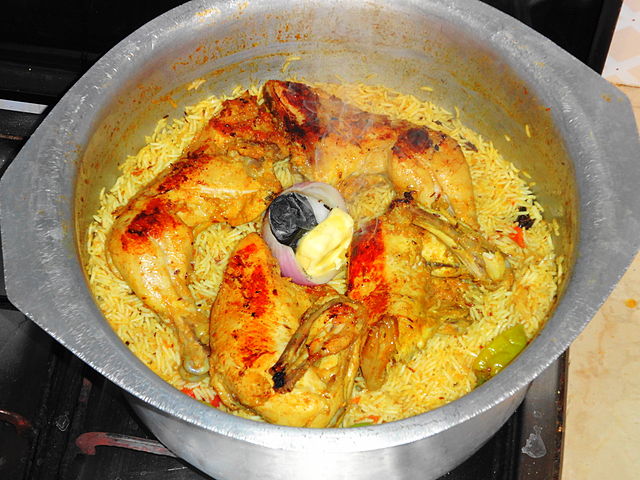
Baghdad’s culinary and cultural influences permeated the western regions of its empire, infusing itself into the eating traditions of North Africa and up into the Iberian Peninsula or the al-Andalus of the Arabs. Here in al-Andalus, Baghdad’s culinary traditions continued while new dishes were developed incorporating readily available ingredients.
When the Arabs were expelled from al-Andalus in the 17th century, a great number settled in North Africa. With them they carried the rich cuisine of Al-Andalus. In the elegant palaces of the rich in Fez and Marrakesh where the superb Arab-Islamic civilization of Spain had its greatest impact, the culinary art of Morocco reached its epitome of perfection.


